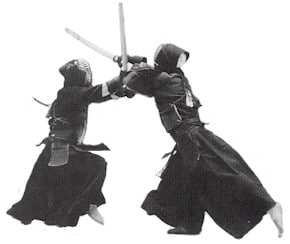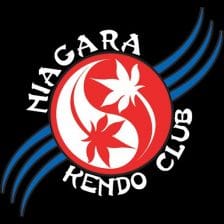A Typical Kendo Class . . .
 . . . starts before the official class time. Students clean the dojo floor as a sign of respect for the space, and to ensure the floor is clean and safe.
. . . starts before the official class time. Students clean the dojo floor as a sign of respect for the space, and to ensure the floor is clean and safe.
After the warmup, the Sensei or head student will call “Seiza” which is a call to line up. All students line up by rank / age / experience. There is a short meditation so Kendoka can clear their minds and focus on their training. Everyone bows and then the practice starts.
First up is basic practice which consists of footwork drills and the practice of the basic strikes men (head), kote (wrist) and do (side). Beginners will practice these techniques using a wooden sword (bokuto) following the basic forms. Intermediate and advanced students will practice these while wearing armour and using bamboo practice swords (shinai).
After that, the Sensei will usually set aside some time for keiko (free practice) and Kendoka will pair up and practice their techniques by sparring.
Keiko is practice, not competition, and it is perfectly acceptable to have your partner score lots of points on you. The point of Keiko is to practice so even if you only make one technique work once, or if you at least improve your technique, you have had a good Keiko session. Keiko is limited to Kendoka with bogu.
After Keiko, there is another line up, meditation, and bowing out procedure during which everyone thanks the Sensei and each other for the practice. We then clean the floor again to ensure it is ready for the next group to use the hall.
Once practice is done, Kendoka often retire to some licensed establishment for refreshments, food and to swap Kendo stories.
